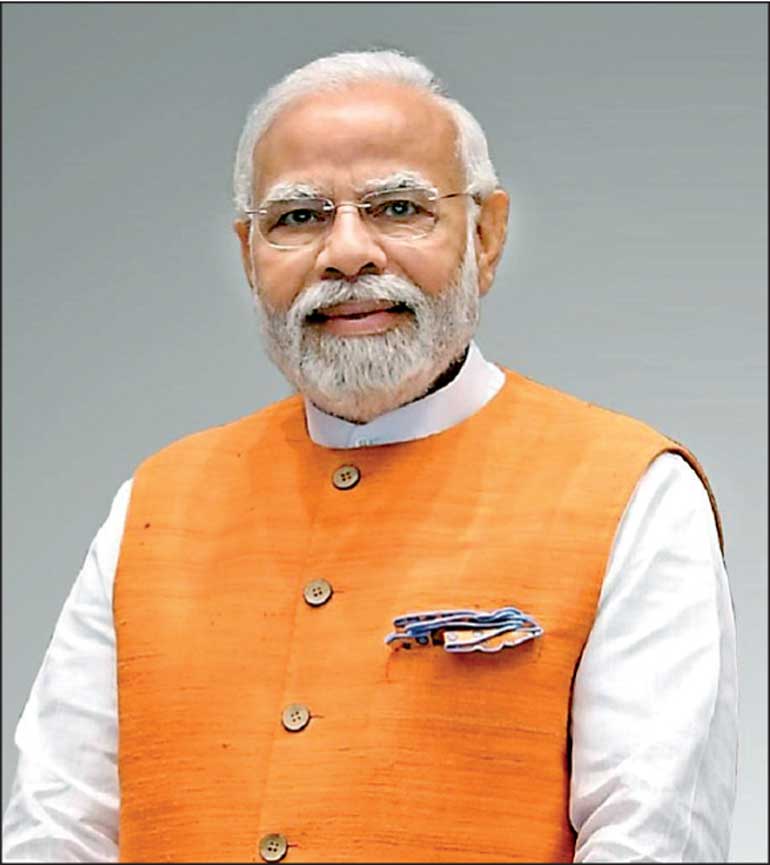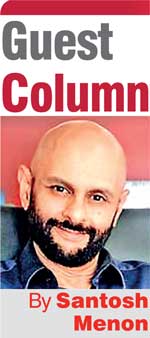Saturday Dec 13, 2025
Saturday Dec 13, 2025
Friday, 4 October 2024 00:22 - - {{hitsCtrl.values.hits}}

President Anura Kumara Dissanayake

Indian Prime Minster Narendra Modi
 I was dining in a Colombo restaurant when the person waiting on me asked who I thought was going to win the Sri Lankan Presidential election. I said I had no vote and so would reserve my opinion but asked him who he thought would win. He said “100% sure AKD”. I said “oh”. The person continued as if he felt he needed to allay fears – he said this is like Narendra Modi coming to power in India. A common man taking away power from the family (entrenched political establishment).
I was dining in a Colombo restaurant when the person waiting on me asked who I thought was going to win the Sri Lankan Presidential election. I said I had no vote and so would reserve my opinion but asked him who he thought would win. He said “100% sure AKD”. I said “oh”. The person continued as if he felt he needed to allay fears – he said this is like Narendra Modi coming to power in India. A common man taking away power from the family (entrenched political establishment).
That set me thinking if indeed there was such a common thread tying the two politicians in South Asia.
In 2014, Narendra Modi and his BJP party stormed to power in India. It seemingly marked the decimation of the traditional party – the Gandhi Family run Congress Party. Till 2014 the Congress party was the pre eminent power with BJP or Janatha party (its predecessor) making slow in roads.
There were non congress governments in India before – in 1977 after a disastrous period of emergency imposed by Indira Gandhi but these non congress parties were primarily coalitions mustered together that had inherent contradictions and was unsustainable. Post 2004, the congress party themselves formed a coalition government which was constrained to act decisively on matters of national interest – the economy and national security, due to opposing interests preventing such action.
In 2014, the people of India were fed up and made a bold change and gave the Narendra Modi-led BJP a resounding 282 seats in a 543 member parliament and for the first time, a non congress party had an absolute majority.
 Status quo shattering
Status quo shattering
The change was at once seminal and status quo shattering cause it threatened to change the nature of the Indian state completely. Ideology wise the BJP and RSS were considered right wing nationalists and some quarters within the party did engage in aggressive campaigning based on communal politics, but now after the passage of 10 years, it’s safe to say that by and large the government and the party has not departed too far from what the constitution of India allows it do. And it’s safe to say that other than at the height of electioneering, Prime Minister Narendra Modi himself has stayed away from openly flaunting any divisive communal ideas.
Now drawing a parallel with Sri Lanka – the country has just chosen AKD (Anura Kumara Dissanayake) – a politician with strong leftist moorings (joined JVP – a militant Marxist movement in 1987) as its ninth executive president.
People in Sri Lanka too, like in India in 2014, seem fed up with the sameness of the political establishment hitherto – family rule, deep rooted corruption and incompetent management leading to bankruptcy in 2022. They waged a battle on the streets called ‘Aragalaya’ (the struggle) to depose the then President Gotabaya Rajapaksa. And while he did flee, another veteran politician Ranil Wickremesinghe took charge as President.
Despite Ranil Wickremesinghe taking charge and putting measures in place that have lifted Sri Lanka from bankruptcy to relative stability – the people still angry and seething from Aragalaya and subject to severe IMF measures that reduced their income, and increased taxes have decided that ‘enough is enough’.
AKD has stormed to power in the 2024 elections. Though without a full 50+1 majority, he is still the leading candidate (a 1.2 million gap with the next candidate) in terms of votes. His 42 votes marks a significant increase in votes for him compared to the 3% votes he got in the 2019 elections.
A section of the population is alarmed at this seminal and earth shattering event in Sri Lankan democracy. They fear that AKD and his party’s natural instincts are to be leftist, militant and isolationist and they think this development can make Sri Lanka regress.
 Very early days but initial indications show the fears could well be unfounded.
Very early days but initial indications show the fears could well be unfounded.
AKD has firmly stated his resolve to continue the IMF program and asserted the need for Sri Lanka to actively engage with global trade to grow the economy.
Both Narendra Modi and AKD (one said to propagate right wing nationalism and the other with Marxism running through his veins) have actually demonstrated two other ‘isms’ it seems – pragmatism and peopleism.
(Peopleism – a coined term to mean ‘based on people’s interest and welfare’. As opposed to other ‘isms’ representing ideologies of the past)
Similarities between the two campaigns
Let’s compare seeming similarities between the two campaigns – Narendra Modi has been the face and voice of the BJP. He has strenuously cultivated an image of being someone who has risen from being a tea seller to become the PM of India. He has portrayed himself as a decisive strong leader who brooks no nonsense and is completely corruption-free. He has made it his forte to aggressively dismiss the ethos of the previous congress government as self serving, nepotistic and corrupt. In fact he blames them for India’s lack of progress in the last 75 years. He has spoken a great deal about the economy. And focused on it as his mission. He speaks very little English (unlike previous PMs from the family) and wears it like a badge of
honour.
A leader risen from the masses who is decisive, energetic and corruption free – one who is actively committed to making India a great economic power.
wwThis philosophy of peopleism has won him millions of loyal followers in India who will stand by his side without hesitation. Despite the heat of electioneering and the grimy dust of accusations being hurled, these supporters have been steadfast and committed to a leader who they think understands them and is the best person to run India.
PM Narendra Modi’s pragmatic people-centric (peopleism) approach expresses itself in a hands on style where he sets goals for his team and actively monitors progress on all fronts. In his guard India has taken giant strides in a short time in the areas of economy, space research, gender equality and many such matters of significance.
AKD too similarly has been the face and deep voice of the NPP campaign. He has directly spoken about the suffering ordinary people face – basic things like health education and a secure future for all the children of the country. He has talked at length of his upbringing (from an ordinary family) and he too has worn his inability to speak English like a badge. But what he speaks and how he speaks in Sinhala creates huge resonance among the voters. He has been scathing about the corrupt political establishment running Sri Lanka ever since independence.
 The similarities in approach between the leaders are indeed there for
The similarities in approach between the leaders are indeed there for
all to see.
Sustainable change
If like PM Modi, President AKD too can exercise pragmatism and peopleism instead of being driven purely by ideology, his ability to inspire the masses will create positive impact in Sri Lankan society. And bring about sustainable change in all aspects of people’s lives.
Whether AKD will command the incredible loyalty and support that PM Modi gets wherever he goes will depend on whether he is able to convince them that he is genuinely focused on their needs and not blinded by pre determined ideology that might create the opposite effect.
The interesting thing is both India and Sri Lanka – two civilisational twins now have leaders who have risen from the masses and who are obsessively compelled to do what’s needed for their people’s welfare.
Hope that when the two leaders Anura Kumara Dissanayake and Sri Narendra Modi) meet they would find common purpose in their similar approaches to polity. And use that as a platform to build even closer ties between two civilisational twins separated by the Palk Straits.
(The writer is an Indian businessman living in Sri Lanka. He is a keen observer of politics and economics in the country. And he
can be reached on [email protected].)
